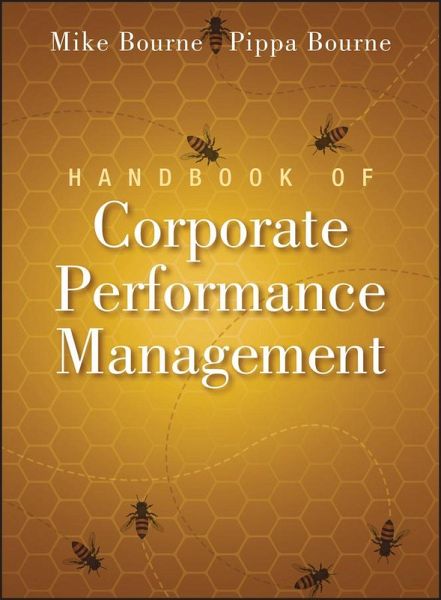
Handbook of Corporate Performance Management
Versandkostenfrei!
Versandfertig in über 4 Wochen
59,99 €
inkl. MwSt.
Weitere Ausgaben:

PAYBACK Punkte
30 °P sammeln!
A thorough and comprehensive guide to measuring and managing the performance of businesses, understanding where you are, communicating where you want to be and managing towards your longer term strategic goals. Measuring performance in a way which is linked to strategy and measures the right activities is a process which few organizations undertake, but those which do reap substantial benefits in terms of increased success. Even fewer organizations can maintain and use their measurement system effectively, engaging the workforce in delivering success. This book will show readers how to do just...
A thorough and comprehensive guide to measuring and managing the performance of businesses, understanding where you are, communicating where you want to be and managing towards your longer term strategic goals. Measuring performance in a way which is linked to strategy and measures the right activities is a process which few organizations undertake, but those which do reap substantial benefits in terms of increased success. Even fewer organizations can maintain and use their measurement system effectively, engaging the workforce in delivering success. This book will show readers how to do just that, using relevant examples from a variety of organizations including:
Tesco's 'steering wheel'- a means of displaying what is important to the organization from boardroom to store - Terry Leahy has attributed much of Tesco's success to their performance management approach
EDF Energy's highly innovative approach to cascading their 'success maps' down the organization, winning them a high degree of ownership and commitment to the organizational goals by involving people at all levels in the process
Taking a practical approach, and including details of processes and tools that can be adopted and customized by any organization, the authors also include guiding principles to help readers avoid the pitfalls of inappropriate performance management. The book, uniquely, combines guidance on the practical use of frameworks such as the Balanced Scorecard, with the application of measures to manage performance.
Tesco's 'steering wheel'- a means of displaying what is important to the organization from boardroom to store - Terry Leahy has attributed much of Tesco's success to their performance management approach
EDF Energy's highly innovative approach to cascading their 'success maps' down the organization, winning them a high degree of ownership and commitment to the organizational goals by involving people at all levels in the process
Taking a practical approach, and including details of processes and tools that can be adopted and customized by any organization, the authors also include guiding principles to help readers avoid the pitfalls of inappropriate performance management. The book, uniquely, combines guidance on the practical use of frameworks such as the Balanced Scorecard, with the application of measures to manage performance.



